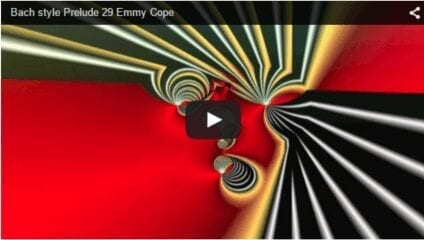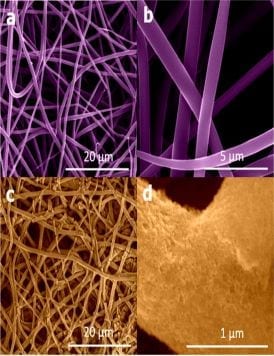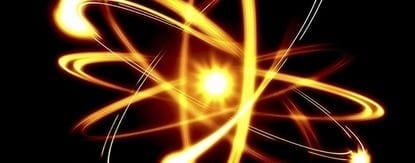
Painting might be the last thing you’d expect computers to excel at.
It’s abstract, expressive, and tied to cultures, psychology, and subjectivity, whereas computers are objective, precise, and governed by the rules of mathematics. Painting, with its emotional reasoning and unclear meanings, appears to be the antithesis of a feeling, logical computer. But they aren’t so far apart as they seem. Painting and other forms of visual art owe much to areas of mathematics such as geometry and perspective, and the algorithms that computers adhere to can in fact be made to generate images as varied and subtle as a human painter.
Much like its musical counterpart, algorithmic art dates back to the time before computers were commonplace and in its purest sense requires no artificial intelligence whatsoever. You’ve probably seen examples of fractal art, which replicates patterns in a recursive, algorithmic way to often-stunning results that vary in appearance from geometric to organic to alien.
Traditionally, algorithmic art involves a human coming up with a concept that an algorithm then generates or visualizes either from scratch or based on existing material. An extreme example of this is Nagoya University researchers Yasuhiro Suzuki and Tomohiro Suzuki’s evolutionary painting algorithm, which takes example paintings of a given style and progressively mutates them – cutting and splicing and flipping elements, throwing out at each evolution any images that don’t match the user’s initial stylistic choices. But algorithmic art is more commonly used in the sense of images that are generated by computer code written by people like Dextro, who is one of the leading practitioners of algorithmic/generative art.
As with music, game development, and writing, much of the attention from artists and scientists has been placed upon algorithms and intelligent tools that augment the artist’s creativity. The Processing programming language was designed as an electronic sketchbook for artists and designers, while some of the better-known apps for algorithmic artists include Ultra Fractal, Scribble, and Fragmentarium.
There are now over a dozen separate kinds of algorithmically-based art, including fractal art, genetic art, cellular automata, proceduralism, and transhumanist art. And there are multitudes of websites such as The Algorists, Algorithmic Worlds, and The compArt database Digital Art that celebrate the work of artists who use algorithms.
Read more: Creative AI: The robots that would be painters
The Latest on: Algorithmic art
[google_news title=”” keyword=”Algorithmic art” num_posts=”10″ blurb_length=”0″ show_thumb=”left”]
via Google News
The Latest on: Algorithmic art
- Why are algorithms called algorithms? A brief history of the Persian polymath you’ve likely never heard ofon May 7, 2024 at 6:24 pm
Our modern lives are influenced by algorithms at every step. We can trace this influence back more than 1,200 years ago – to a Muslim mathematician.
- Mnuchin: TikTok Algorithm Could Be Rebuilt If He Buys Iton May 7, 2024 at 12:19 pm
No, Katy Perry and Rihanna didn't attend the Met Gala this year. Deepfake images depicting a handful of big names at the Metropolitan Museum of Art's annual fundraiser quickly spread online Monday and ...
- How Should Documentaries Use AI?on May 7, 2024 at 9:54 am
“It’s really a collaborative and creative art,” said Jenkins, who has also worked at Ken ... There’s also a lot of inaccuracies within that footage. This is the algorithmic bias piece: Whatever Sora ...
- MaxDiff RL Algorithm Improves Robotic Learning with “Designed Randomness”on May 6, 2024 at 1:58 pm
In a groundbreaking development, engineers at Northwestern University have created a new AI algorithm that promises to transform the field of smart robotics. The algorithm, named Maximum Diffusion ...
- Will Instagram’s latest algorithm update help designers?on May 6, 2024 at 11:01 am
Spring: a time of change. The weather is turning, the flowers are blooming, and now Instagram is rolling out a major update to its content recommendation ...
- New AI Algorithm Enables Faster, More Reliable Learningon May 3, 2024 at 2:36 pm
Recent research by Northwestern Engineering researchers, and published in Nature Machine Intelligence, unveils a novel artificial intelligence (AI) algorithm tailored for smart robotics.
- Why the Radio Is Still Better Than the Spotify Algorithmon May 2, 2024 at 2:00 pm
Increasingly, many people find new music thanks to an algorithm, but I think a radio station programmed with thoughtful human curation will always be better.
- Random robots are more reliable: New AI algorithm for robots consistently outperforms state-of-the-art systemson May 2, 2024 at 2:00 am
Northwestern University engineers have developed a new artificial intelligence (AI) algorithm designed specifically for smart robotics. By helping robots rapidly and reliably learn complex skills, the ...
- Pioneering Digital Artist Andries Odendaal Launches Generative Art Collection, FABRIKon April 30, 2024 at 8:06 am
Cape Town, South Africa, April 30th, 2024, ChainwirePioneering digital artist Andries Odendaal is unveiling his first ...
- Art Meets Algorithm – Your Guide to AI-Driven Cartoon Magicon April 25, 2024 at 9:22 pm
Imagine stepping into a world where your everyday photos transform into whimsical cartoon versions of themselves, not by the stroke of an artist’s brush, but by the swift algorithms of artificial ...
via Bing News










